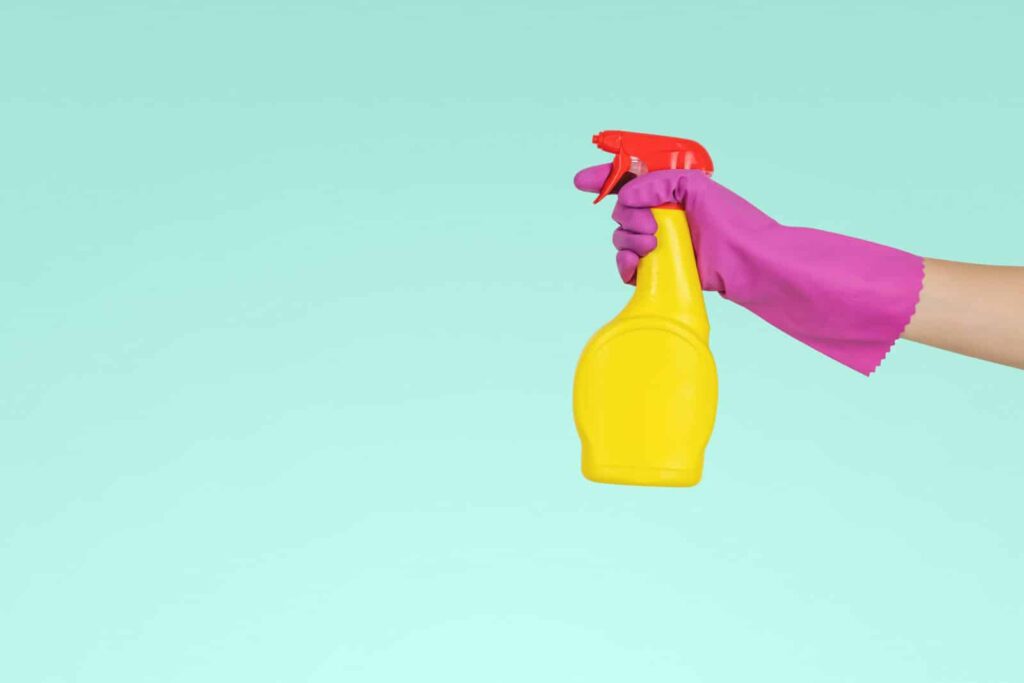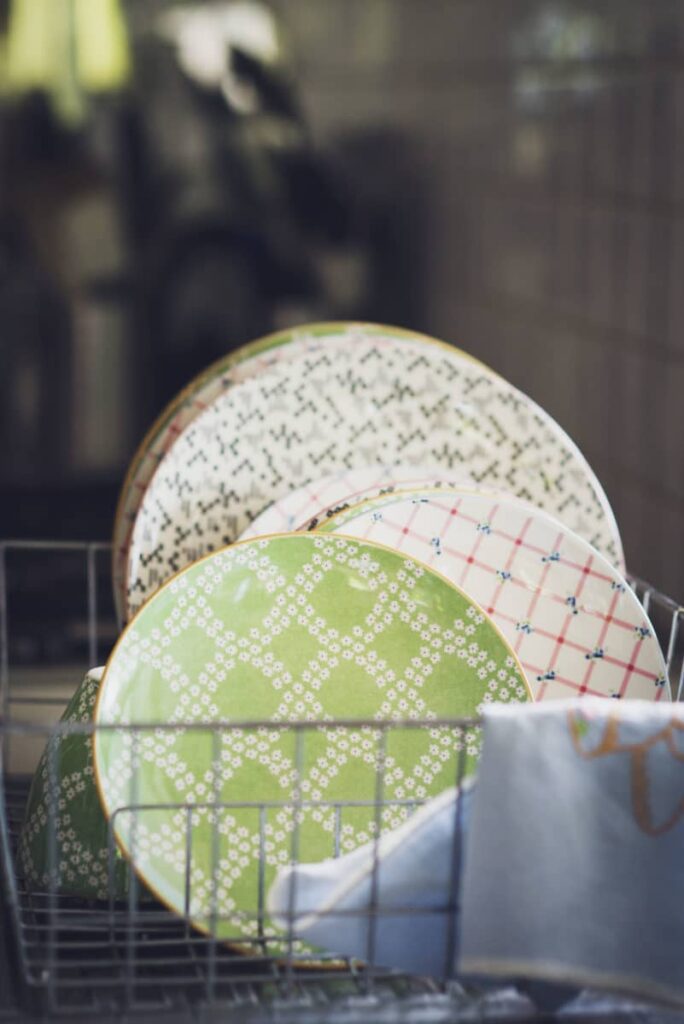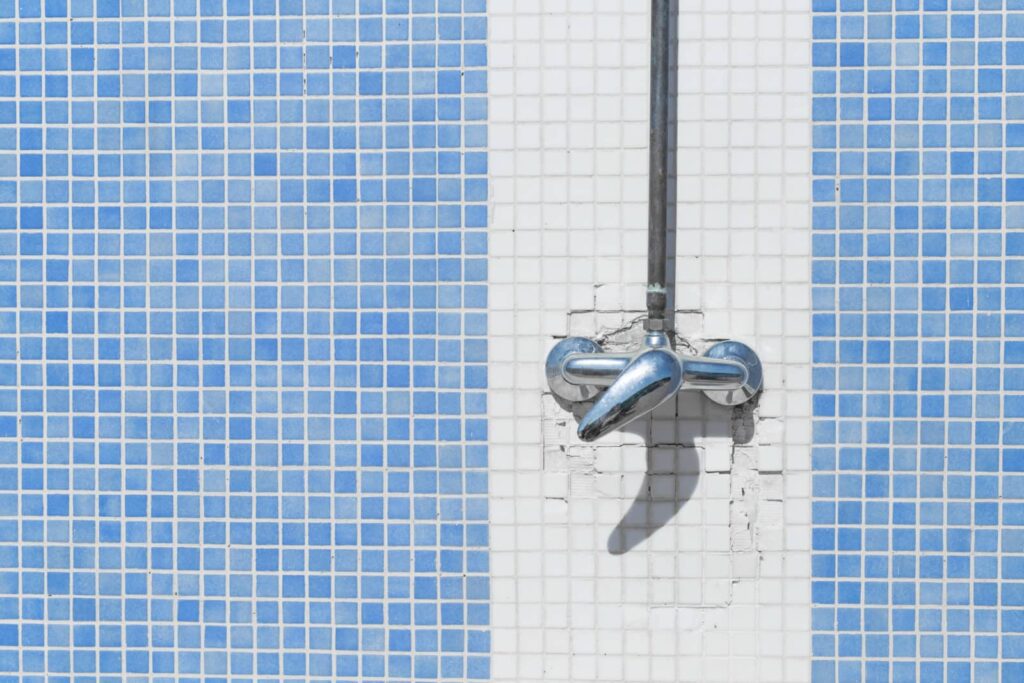Believe it or not, fixing ugly stains in your tub, mineral build-up on faucets, and the rattling noise from the water heater is possible. How? By first determining the real cause, which happens to be hard water. But how do you tell you are using hard water? Here are signs that the water you are using is hard.
Table Of Contents
−- What does hard water look like?
- 1. Your tap water tastes weird
- 2. Spots on your dishes
- 3. Dry, itchy skin after bathing
- 4. Your hair seems dull or dingy
- 5. Mineral build-up around water fixtures
- 6. Rattling noises coming from your water heater
- 7. Soap scum is everywhere
- 8. Your laundry appears dull or grimy
- 9. Hard water wreaks havoc on appliances
- 10. Slow-running faucets could be a sign of hard water
- 11. Your blood pressure is on the rise
- A hard water test kit will give you the most accurate response about the hardness of your water.
- Do it Yourself (DIY) Test kit.
- Solution
- Bring “Temporary” hard water to a boil.
- Use a hard water cleaning aid to remove soap scum.
- When doing laundry, use washing soda.
- Remove hard water stains with distilled white vinegar
- Think about getting a magnetic water conditioner.
- Install a faucet water softener
- Purchase a whole-house water softening system
- Conclusion
What does hard water look like?
Hard water stains go by various names, including limescale, mineral deposits, mineral accumulation, and hard water deposits, but the concept is the same. Hard water stains emerge as a chalky white residue caused by the development of surplus minerals in hard water.

1. Your tap water tastes weird
Because of the high mineral content, hard water frequently tastes metallic. Iron, in particular, may impart a metallic flavor to the water. In addition, if your water pipes have a significant amount of scale building due to hard water, you may detect a mud-like or moldy flavor from the tap.
2. Spots on your dishes

Are there spots on your dishes after washing and rinsing them? If so, you could be using hard water. These spots appear after the minerals in the water mix with the detergent used to clean your dishes, leaving you with dishes that look unclean even after all the hard work.
3. Dry, itchy skin after bathing
Well, there are many other reasons why your skin can itch. But the mineral in hard water can also irritate your skin. Often, hard water gives your skin a scaly appearance. Not to mention that your skin will look older after using hard water.
4. Your hair seems dull or dingy
Do you notice that everyone in your family has dull-looking hair? Hard water’s minerals may make it difficult for water to rinse out of your hair entirely. When shampoos and conditioners are not fully washed out of the hair, the residue left behind can cause hair to become limp, dull, or filthy.
5. Mineral build-up around water fixtures
Hard water contains minerals that deposit on the fixtures as water passes through. If this continues for a long, it restricts the flow of water. So, if you notice mineral build-up around your water fixtures, there is a high possibility that your water is hard.
6. Rattling noises coming from your water heater

The rattling sound results from small rock-like mineral deposits swirling around the water tank. You can empty your tank often to prevent mineral build-up. Keep in mind mineral build-up also result in some water heater elements failing.
7. Soap scum is everywhere
That cloudy, chalky mess on the tub surface, curtain shower, or tile indicates your water is hard. It forms when water combines with the detergents in your shampoo and soap. Not using hard water is the only way to avoid the eyesore soap scum.
8. Your laundry appears dull or grimy
When you wash your garments in hard water, they may be left with a soapy residue. Hard water does not effectively rinse your clothing. As a result, your laundry may not be as clean or will wear out faster. If you don’t have a water softener, follow hard water laundering recommendations.
9. Hard water wreaks havoc on appliances
In a residence with hard water, any item that consumes water—washing machine, dishwasher, or water heater—will not last as long as it should. Mineral deposits can collect over time and obstruct water supply and drain lines, as well as on internal components such as the arms that spin in a dishwasher.
10. Slow-running faucets could be a sign of hard water
While various circumstances can cause low water pressure, including a water meter shut-off valve that is not completely open, slow-running water, in conjunction with the other issues described above, could indicate mineral deposits in the water supply lines are obstructing the water flow. While adding a water softener will prevent further mineral buildup in the lines, replacing the lines is the only option to restore full water pressure, which is a big plumbing undertaking.
11. Your blood pressure is on the rise
While various reasons can cause high blood pressure, some evidence indicates a link between consuming hard water and hypertension. Those who currently have adequate iron and magnesium levels are more vulnerable. If you have high blood pressure, talk to your doctor about the potential benefits of installing a water softening system in your house.
A hard water test kit will give you the most accurate response about the hardness of your water.
Water hardness is measured in grains per gallon (GPG) or parts per million (PPM), but you don’t need to do complicated arithmetic to determine if your water is hard. Instead, hard water test strips, such as the JNW Direct Total Hardness Test Strip Kit, are the simplest approach to validate your hypothesis (available from Amazon).
This kit includes 150 strips, and testing is as simple as dipping the tip of the strip in water and comparing the strip’s color to the color chart on the side of the container. Hard water is defined as anything above three GPM or 50 PPM. The test strips can be used to test tap water, filtered water, or water treated by a water softening system.
Do it Yourself (DIY) Test kit.
There is an easy technique to determine whether or not your home has hard water without having a test performed. All that is required is a transparent water bottle and pure liquid soap. To put your water to the test, follow these procedures.
- Pour water into a clear container.
First, locate a transparent container, such as an empty plastic water bottle. We’re using beautiful Erlenmeyer flasks to appear more scientific.
Fill your container up to roughly a third with water from your faucet. We used hard and soft water for our test so you could observe the difference at the end.
- Add some Pure Liquid Soap.
Squeeze around 10 drops of soap into your container. The best liquid soap is pure soap. Do not use detergent-labeled soap because it contains additives that will distort test findings.
Castile soap is effective since it contains minimal chemicals and no colors or scents.
- Give it a good shake!
This is the exciting part. Shake the container for at least 10 seconds to combine the soap and water and create soapy bubbles. Remember to put on the cap first!
- Examine the water for suds and clarity.
It’s now time to look at the results. If your container has a lot of suds at the top and the water behind the bubbles clears up, you probably have soft water.
However, if you don’t get many suds after shaking and your water seems hazy, you probably have hard water. You can continue this experiment by adding more soap. The more soap you use to make bubbles, the harder your water is, and the more soap you waste cleaning your house and doing your clothes!
Solution
What do you do if you have hard water?
There are several temporary fixes you can do. Here are 7 easy ways to manage hard water issues
Bring “Temporary” hard water to a boil.
Temporary hard water is hard water with a high concentration of calcium bicarbonate. This is because the dissolved minerals in the water are precipitated out of the water during the boiling process. Because boiling reduces the calcium content of the water, the result is softer water.
Boiling is a simple and inexpensive approach to softening hard water for ingestion. It does not, however, address persistent hardness and rather addresses temporary hardness. The latter contains dissolved calcium sulfate that will not be removed by boiling.
Use a hard water cleaning aid to remove soap scum.
The hard water minerals react with soap chemicals to form “soap scum.” Soap scum, often known as lime soap, is the white solid buildup found on water fittings. It can also build up on sinks, drains, tiles, shower doors, and tubs.
The positively charged calcium atoms in the water cause soap scum to develop. These atoms obstruct the dissolution of soap molecules. Instead, undissolved soap molecules adhere to and accumulate on surfaces.
Employ a hard water cleaning product to address these negative effects. These items include a solution that neutralizes the positive calcium atoms found in hard water. In addition, they make it easier to rinse away soap, which aids in the prevention of scum formation in the first place.
When doing laundry, use washing soda.
One of the most effective ways to treat hard water for laundry is washing soda. It is a sort of chemical that is made up of carbonic acid salt (sodium carbonate). It aids in the softening of both temporary and permanent hard water.
In layman’s terms, washing soda removes dissolved calcium and magnesium from hard water. Softer water results from the elimination of certain mineral ions from the water. This makes it easier for soaps to lather.
Remove hard water stains with distilled white vinegar
Calcium is naturally alkaline, implying a pH greater than 7. On the other hand, white distilled vinegar is extremely acidic, with a pH of roughly 2.5. In this approach, vinegar can aid in the neutralization of hard water’s calcium concentration.
However, would you not want to saturate your drinking water with vinegar? As a result, utilizing vinegar as a water softener is only appropriate for cleaning. It can also be used as a cleaning aid while handing washing textiles.
Fixtures with limescale buildup can be soaked in a bowl of distilled vinegar for at least one hour. You may use vinegar to remove hard water film and stains from appliances and surfaces.
Think about getting a magnetic water conditioner.
Magnetic water conditioners condition water by using a magnetic field. They do not entirely soften the water. They may, however, already be suitable for households with mild to fairly hard water.
These devices are often linked to the main water supply line. Their magnetic field changes the properties of water contaminants.
Mineral ions, for example, will segregate due to these modifications. As a result, they will find it more difficult to bind together and create limescale on surfaces. The minerals will continue to be present in the water, but they will drain rather than settle.
Install a faucet water softener
A water softener is a simplest and most convenient solution to fix hard water. You can save money on installation by getting simply a faucet or an under-sink softener.
Salt water softener
Crystalline chemicals, such as sodium or potassium chloride, are used in most softening systems. This solution contains and suspends a softening medium, usually a resin form. These softeners work through a process known as “ion exchange.”
Ion exchange begins as soon as the water enters the softener. This action causes the water’s mineral ions to exchange with the chloride ions in the softener. As a result, the minerals that cause hard water remain in the softener’s chamber.
This exchange or removal of mineral ions results in softer water.
Salt-free water softener
You could also install a saltless water softener. Instead of “exchanging ions,” it will convert mineral ions into extremely small crystals. This causes the crystallized minerals to get suspended in the water.
As a result, using a salt-free softener allows the water to retain its calcium and magnesium content. On the other hand, Mineral ions will not be able to “attach” to surfaces. This reduces the possibility of scale buildup on your fixtures and plumbing pipes.
Instead of using salt, these devices convert calcium ions into nanocrystals. The calcium ions are subsequently suspended in the water due to this crystallization. They remain in the water but make no touch with any other surfaces.
Purchase a whole-house water softening system
A whole-house water softener begins to soften hard water as soon as it enters your main water supply line. Every water outlet in your home will produce softened water. It’s an expensive purchase, but it’s well worth it because you’ll have soft water in every room of your house.
Conclusion
Once you are sure you are using hard water, the next step is to find a permanent solution. Thanks to water softeners as they offer a permanent solution to hard water.

Jay
Jay is a health and wellness enthusiast with expertise in water quality and nutrition. As a knowledgeable advocate for holistic well-being, Jay successfully manages Type 2 Diabetes through informed lifestyle choices. Committed to sharing reliable and authoritative insights, Jay combines firsthand experience with a passion for enhancing health."

